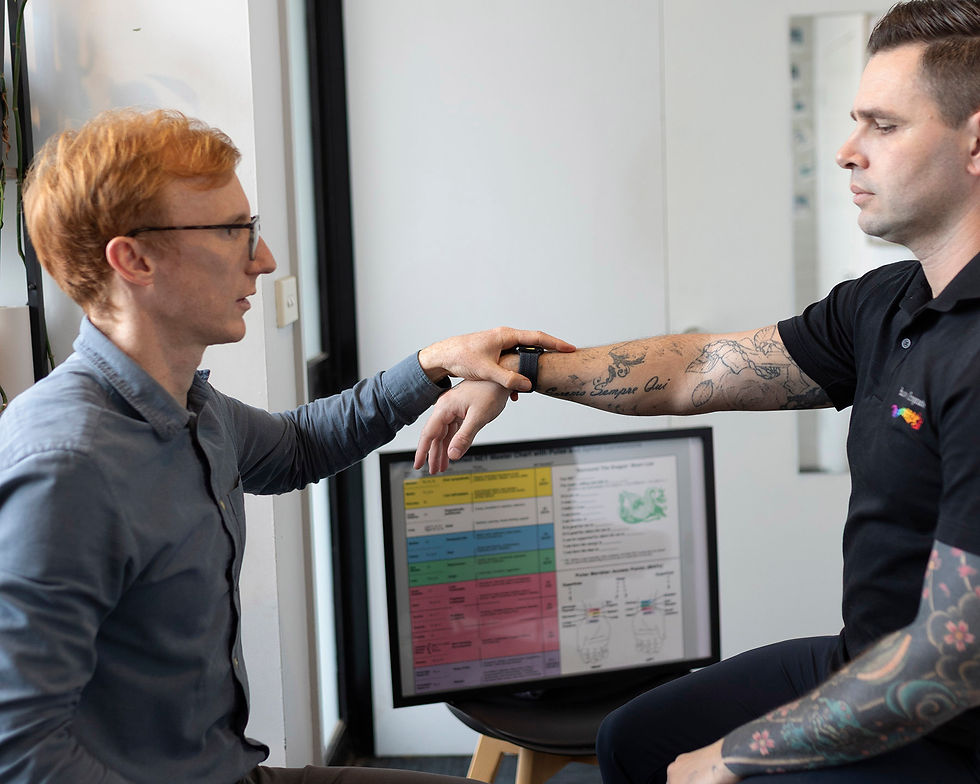Caring for your spine during Pregnancy
- Dr Cynthia Collins

- Aug 5, 2024
- 3 min read
Updated: Nov 22, 2024
Pregnancy is one of the most important times for a woman to be under Chiropractic care. From the moment of conception, your body changes dramatically. There are millions of changes that are occurring in both the mother and the developing baby. All of these are controlled and coordinated by the nervous system. Now, more than ever it is vital to have a nervous system that responds and reacts immediately to all the changing requirements, and therefore you need a healthy functioning spine
The Central nervous system consists of the brain, the spinal cord and the nerves exiting between the small bones of the spine. The skull and the 24 movable vertebrae of the spine and pelvis encase and protect the nervous system. Because of the close relationship of the spine with the nervous system, the function of your spine directly affects the your nervous system. So if you want your nervous system to be able to react and coordinate all the changing functions of your body efficiently, its paramount to ensure your spine and pelvis are moving and functioning well.
Structurally, the increase in weight forwards pulls on the low back and pelvis. The mid and upper back then pull back to compensate and the neck and head then tilt forward. The pregnant woman also produces a hormone called relaxin, which relaxes the ligaments and muscles of the body preparing for birth. Often any pre-existing niggles or longstanding restrictions become more and more obvious and painful as the baby grows. Research shows that having your spine checked and adjusted by a Chiropractor will ensure a more comfortable pregnancy and birth.3 One study even found that first time mums under Chiropractic care experienced a 24% shorter labour time, whilst a 39% decrease was noted in second time mothers.1
The uterus also directly attaches to the pelvis via two ligaments. So if your pelvis and spine aren’t moving freely, the uterus is placed under tension or what is know as intrauterine constraint. Essentially what this means is that there is less room for the baby to move around freely. Intrauterine constraint can often be a reason for breech positioning of babies. Chiropractic during pregnancy allows your pelvis to move optimally, allowing the baby to position itself well and resulting in a decreased need for intervention during labour, which can injure and harm the baby.4 In a hospital study, chiropractic adjustments during pregnancy showed that there was a 50% decrease in the need for painkillers during delivery.2
Women are often encouraged to do Kegel exercises to strengthen and engage their pelvic floor muscles to aid in a faster more complete recovery from birth. What a lot of people forget to realise is that the pelvic floor muscles attach to the pelvis and lower part of the spine (coccyx) and receive signals from the nerves that originate from the lower back and pelvis.5 So again, ensuring that these areas are functioning optimally is going to ensure your pelvic floor muscles can work optimally and recover as quickly as possible.
Chiropractic care during pregnancy makes sense. It’s safe, its gentle and it will ensure you and the baby are able to functioning as best as possible.
Tips for Caring for Your Spine During Pregnancy
Avoid one-sided positions and repetitive motions to one-side.
Avoid carrying older siblings on your hips.
When sitting, tilt your pelvis forward and avoid long periods of time in semi-reclining positions, such as car seats, lying on the couch or reclining chairs. Your knees should never be higher than your hips.
Avoid crossing your legs. This can put the pelvis in a slight twist.
When sleeping, lay on your side (left is best) and prop pillows or folded towels between your knees for comfort. You spend approximately one third of your life in bed, so get comfortable. Use a supportive pillow and a firm mattress for spinal support.
Avoid wearing high heels.
Don’t try to sit straight up from a lying position using your abdominal muscles. Instead, bend your knees, turn onto your side and push yourself up with your arms.
Avoid standing with your hands on your hips and pushing your tummy forward. Remember to unlock or bend your knees slightly when standing.
Let others lift heavy items for you.
Avoid remaining in one position for too long. If you need to stand for an extended period, place one foot on a small box in front of you to reduce the load on your back. Swap legs.
Keep active. Swimming and yoga are great forms of prenatal exercise. Use common sense though and avoid any high impact activities or anything that will raise your body temperature too high.
Stretch your body gently every day.
Have your spine regularly checked by a chiropractor.






Comments